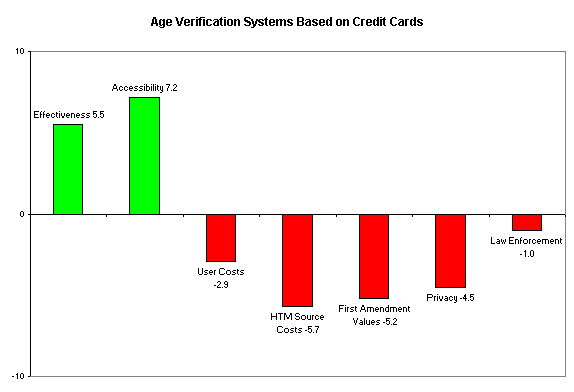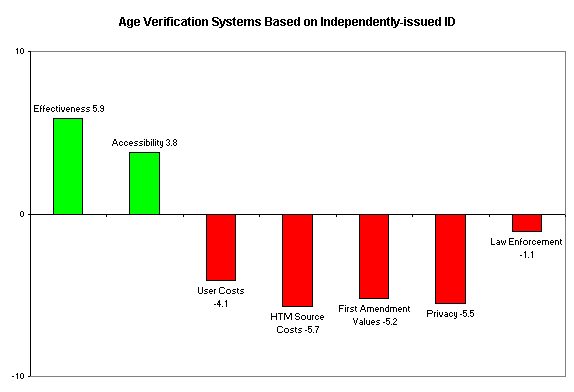|
D. Age Verification Systems
8. Age Verification Systems based on credit cards
Use by a content source of a system to condition access to a web page (or pushed content) on the end user's ability to provide a credit card number. The number may or may not be verified as relating to a valid card (it may not be used for charging a fee) and may or may not be further analyzed to assure that the holder of the card is an adult.

Commentary
- Use of a credit card verification system to access harmful to minors material can be effective to protect minors from accessing some harmful to minors material. A large number of sites operated by the commercial online adult content industry use this system now, but they may still make some images available for free.
- This system's limitations include the fact that some children have access to credit cards, and it is unclear how this system would apply to sites outside the US. It is not effective at blocking access to chat, newsgroups, or instant messaging. Delay in billing means that unauthorized access to harmful to minors materials could occur.
- Credit card systems are readily available, but it may be difficult or burdensome for small or non-commercial sites to implement card verification systems. This system would make some content inaccessible to those users without credit cards.
- This approach imposes moderate costs on consumers and other end-users, who must have a credit card and accept risks in providing it to sites. This approach imposes high costs on publishers, who must pay to verify cards. Use for verification without putting through a charge is viewed with disfavor by the credit card industry.
- Collection of individually-identifiable information at central points via this system poses privacy risks.
- Adverse impacts on First Amendment values result from cost to publishers and chilling effect of identifying users before providing access.
- Central collection of credit card numbers coupled with the "embarrassment effect" of reporting fraud may have adverse effects on law enforcement.
9. Age Verification System based on independently-issued ID
Use by a content source of a system to condition access to a web page (or pushed content) on the end user's use of a password protected identifier that is issued (by a third party) only to those who have presented some credentials indicating adult age.

Commentary
- A number of sources provide this service on a commercial basis at this time. For sites that utilize it, this approach is generally effective at preventing access by children. Overall effectiveness of this approach depends on the extent of control over access to the identification codes and the extent of adoption. This approach is not effective at blocking access to chat, newsgroups, or instant messaging.
- This approach imposes moderate costs on users, who must get an I.D. It imposes high costs on content sources that must install systems and might pay to verify I.D.s.
- The adverse effect on privacy could be high. It may be lower than for credit card verification if I.D.s are separated from personally-identifiable information.
- Uncertainty about the application of a harmful to minors standard increases the costs incurred by harmful to minors sites in connection with such systems.
- An adverse impact on First Amendment values arises from the costs imposed on content providers, and because requiring identification has a chilling effect on access. Central collection of credit card numbers coupled with the "embarrassment effect" of reporting fraud and the risk that a market for I.D.s would be created may have adverse effect on law enforcement.
|
